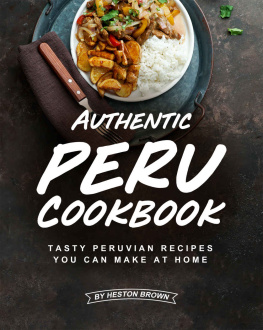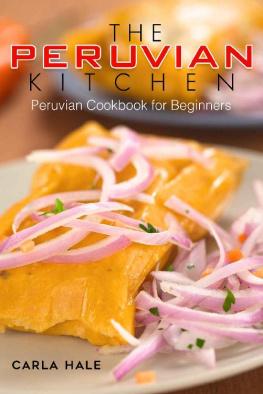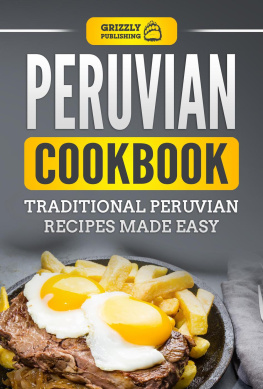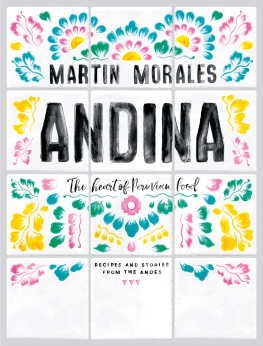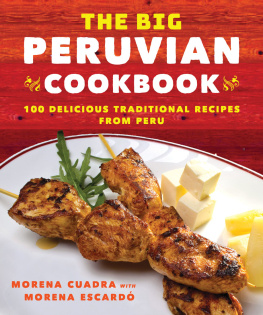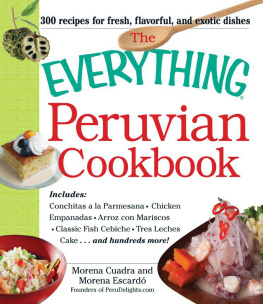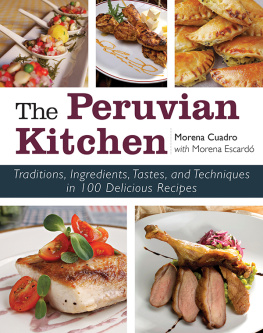Contents

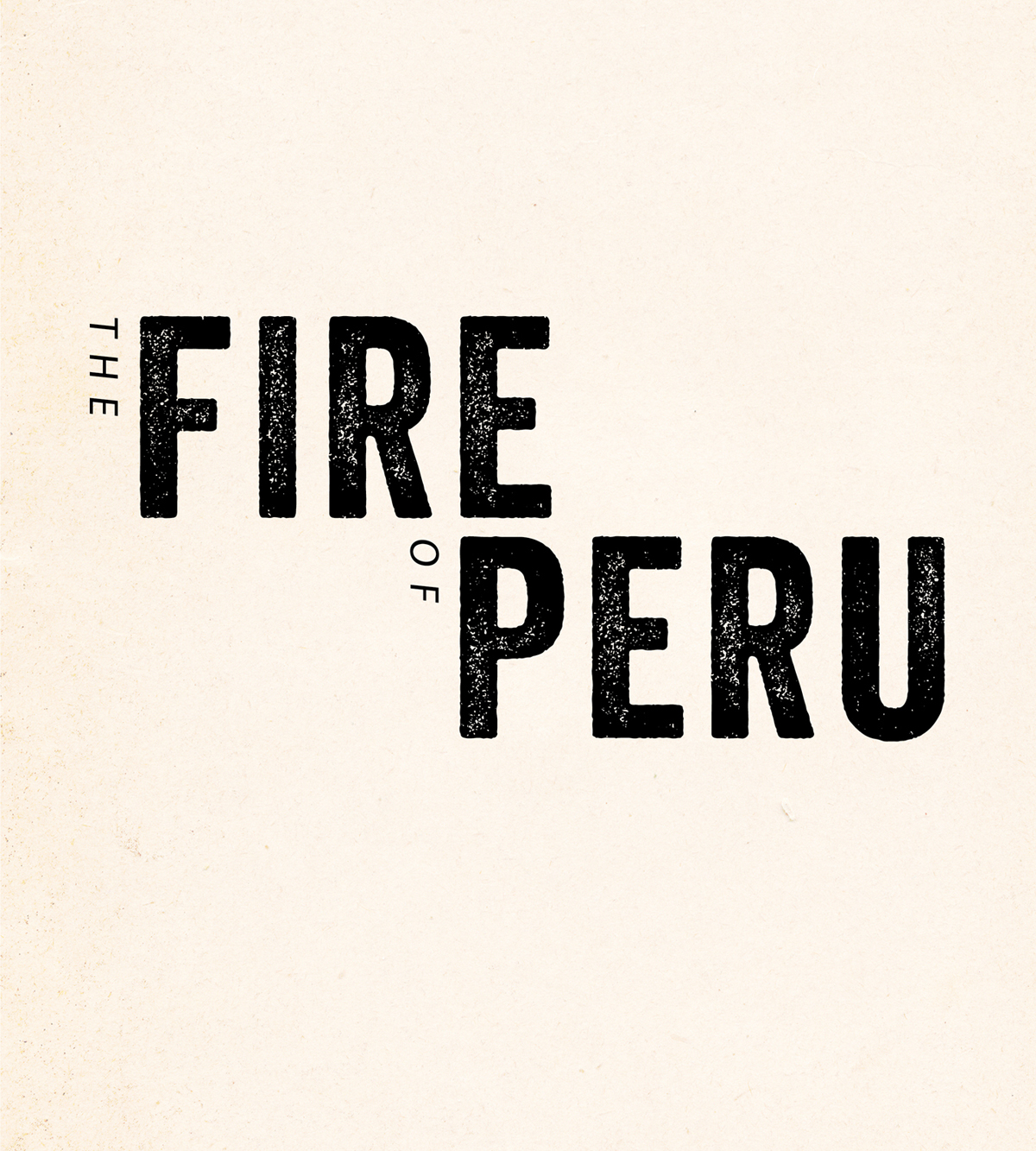
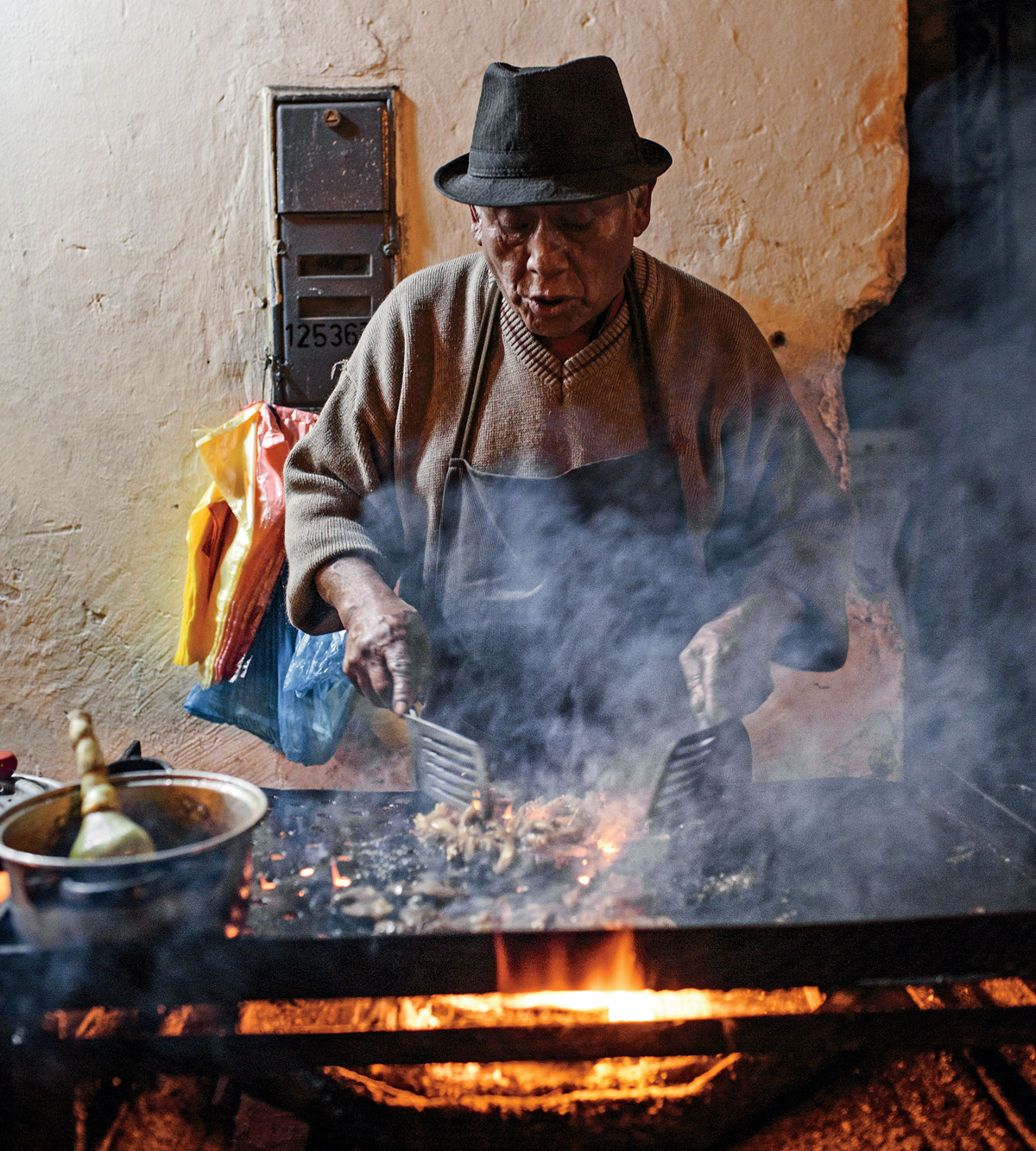

Copyright 2015 by Ricardo Zarate
Photography 2015 by La Mona, LLC
All rights reserved.
Food and prop styling by Valerie Aikman-Smith
Design by Laura Palese
For information about permission to reproduce selections from this book, write to Permissions, Houghton Mifflin Harcourt Publishing Company, 215 Park Avenue South, New York, New York 10003.
www.hmhco.com
Library of Congress Cataloging-in-Publication Data
Zarate, Ricardo.
The fire of Peru : recipes and stories from my Peruvian kitchen / Ricardo Zarate & Jenn Garbee.
pages cm
Includes index.
ISBN 978-0-544-45430-9 (hardcover) ISBN 978-0-544-45329-6 (ebook)
1. Cooking, Peruvian. I. Garbee, Jenn. II. Title.
TX716.P4Z37 2015
641.5985dc23 2014044522
v2.1015
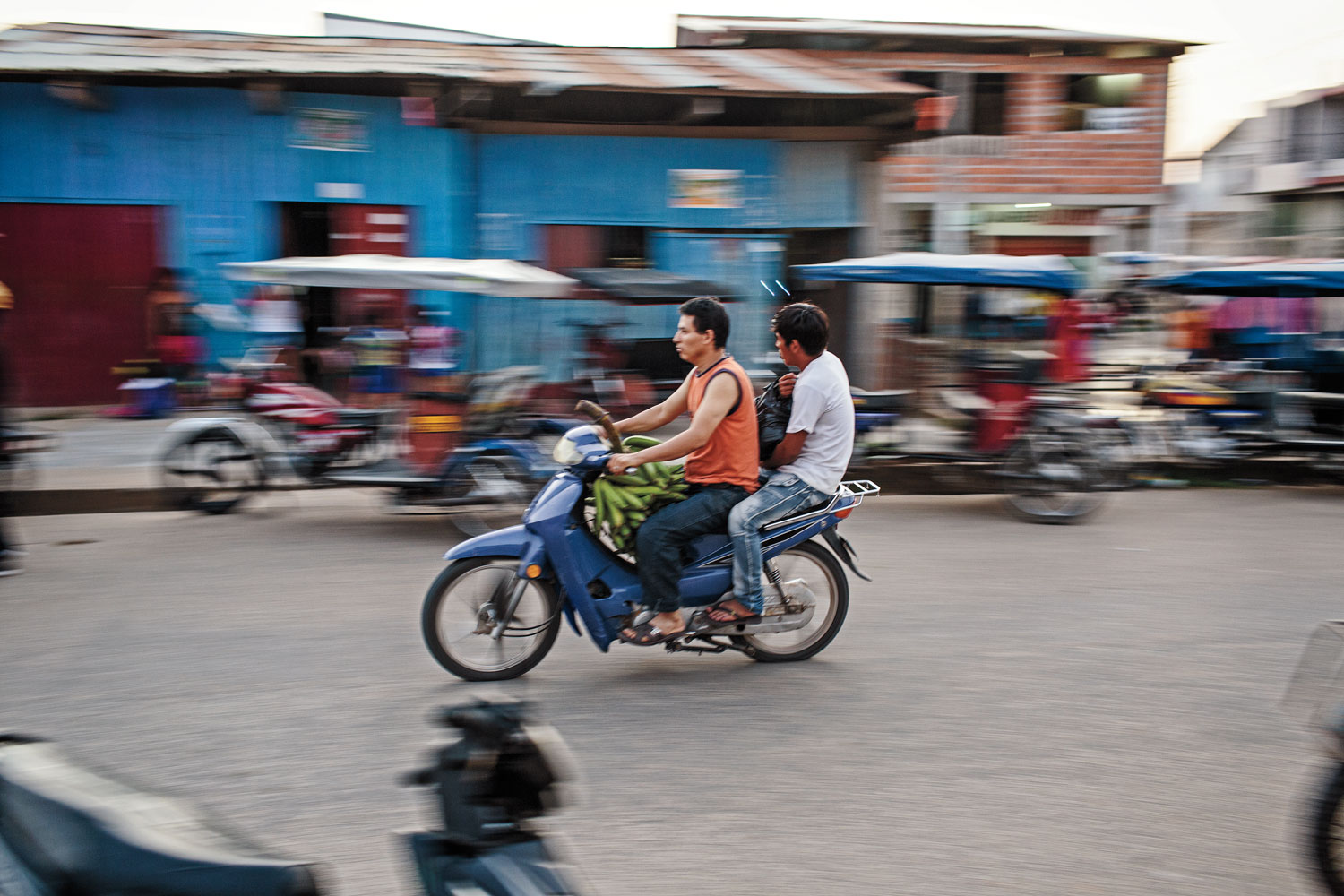
For Miguel:
Brother, friend, business partner, mentor, and drill sergeant, who always pushed me to do more, in the way that only true hermanos can do. Te extrao mucho. You will always be in my heart.
And for our Pap:
For bringing and keeping the Zrate-Choy families together, and dedicating your life and love equally to all thirteen of your kids. Echa Muni!
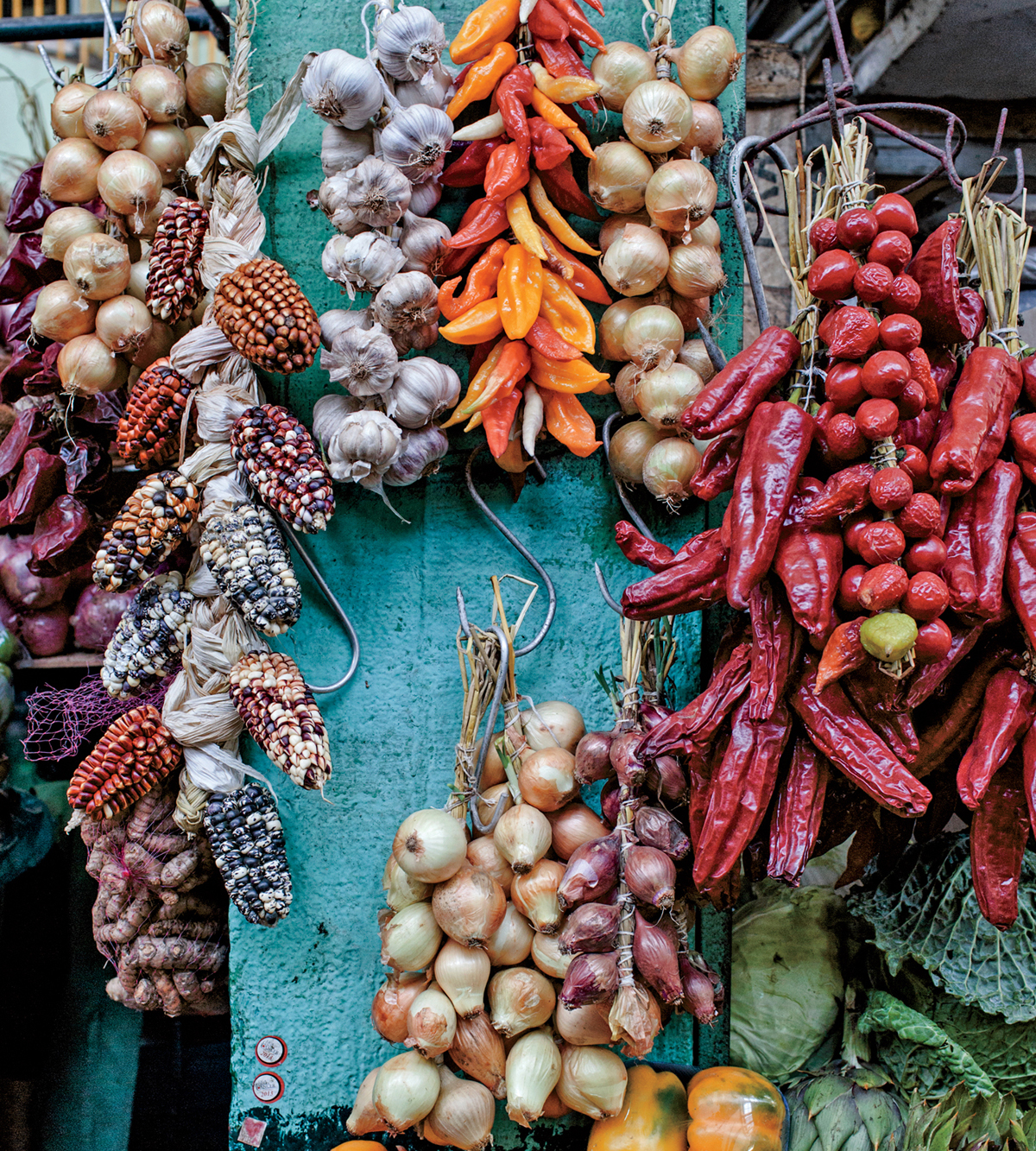
Contents

LAS RACES DEL LA COCINA PERUANA
The Roots of Peruvian Cuisine
What is truly authentic Peruvian food? It is a question I am asked often, and one that I always find difficult to answer. Sabes este sentimiento? (Know the feeling?) Some people compare the food of my country to modern fusion cuisine. That always surprises me. Fusion cuisine is a modern concept. It centers on the idea of intentionally layering unexpected flavors and textures together and often happens in a sophisticated dining setting. Peruvian cooking is the opposite. It is very humble, honest cooking. The flavor combinations are sophisticated, yes. But they are also rooted in long-standing traditions, the result of dozens of cultures cooking styles and ingredients merging together over many years. I often refer to the food of my homeland as one big estofado, or stew, that has been simmering for five hundred years and is finally ready to serve. It is Peruvian cuisines finest hour.
Understanding what makes Peruvian food so relevant today begins with its history, mi pasin secreta. An incredible number of foodsthousands of varieties of potatoes, quinoa, chile peppers, and so many other vegetables and fruitstrace their roots to Perus ancient costa, sierra, y selva (the coast, mountains, and jungle, as we call each region of my country) and our neighbors. Two civilizations in particular built incredible empires around those foods: the Moche, who flourished in northern Peru from the early second to around the eighth century, and the Incas, who spoke Quechua (a dialect still spoken today), who dominated the coast of northern and central South America from the thirteenth century until they were conquered by the Spanish in the late sixteenth century. When the Spanish embarked on a voyage around the world in the late fifteenth and early sixteenth centuries, hoping to find a faster route to Asia for the spice trade, they landed smack in the middle of a whole world of new ingredients. It would take a while for people elsewhere to appreciate them, but many truly changed world history.
Thats not to say it was a one-way street. The Spanish brought many ingredients that locals had never tasted: olives and olive oil, wheat flour, beef and different types of cheeses, garlic and herbs like cilantro, new fruits and vegetables, and exotic spices. (I still get excited, like a little kid doing something sneaky, when I throw star anise and cinnamon sticks, two of my favorite Asian spices brought from the Spanish Spice Trade stash, into so many of my savory and sweet dishes.)
Even more important were the people who made Peru their new home and who became an essential part of developing Peruvian cultura into what it is today. Some of Perus most famous dishes have African roots from the cooking styles of the slaves the Spanish brought along with them, like anticuchos, grilled meats and poultry in a tangy sauce (traditionally, organ meats, leftovers that the slaves were given, were and are still used on the streets of Peru). In 1821, after finally winning independence from Spain, the door to Peru opened for immigrants from all over the world. Like the United States, Peru has citizens with German, British, Arabic, and so many other roots. Italians were particularly influential to Peruvian cooking and brought pasta, Parmesan cheese, and more, but probably most important to modern Peruvian cooking was an influx of Chinese, Japanese, and other Asian immigrants in the nineteenth and twentieth centuries. They opened up a whole new world of Eastern flavors (beyond the spices the Spanish had already brought), from soy sauce to stir-fries and dumplings. Local ingredients merged with those of European, African, and Asian cultures.
That melting pot was a big mix, or stew, of cultures, yes, but probably the most significant of those new influences on Peruvian cooking was southern Chinese. After slavery was abolished in the 1850s, southern Chinese contract laborers arrived in Peru to fill the labor void. They were almost entirely Cantonese men who came to work on Perus sugar and cotton plantations. It was hardly better than slavery, but when the contract laborers finally paid back their travel and labor contracts after years of hard work, they started setting up their own businesses. Until recently, el Chino de la esquina, literally the Chinese on the corner, was slang for our neighborhood grocery stores, now filled with ingredients like soy sauce and kin, or ginger, which is indigenous to southern China. Ginger is usually called jengibre in Spanish, but we use the Cantonese root word. In the new Chino-Latino culture, we didnt follow the same grammar rules as other Spanish-speaking countrieswhats the fun in that? Even the Chinese-Peruvian restaurants you find on almost every other block in Lima are known as chifas instead of restaurantes chinos.
What is so amazing to me is how all of those global influences didnt stay locked up in each culture, but merged to create an entirely new style of cookingthats the true fusion of Peruvian cuisine. A good example is carapulcra (), one of the oldest dishes still made by home cooks everywhere in Peru. The base of the stew is papas secas, traditional dried potatoes, with a good number of European, Asian, and African flavors coming from ingredients like garlic, peanuts, and spices. As I often tell people, I am not the creator of the food of my country. I simply polished the rough edges and took Peruvian food, so rich with history, where it always wanted to go. Yes, as a chef I add my own touches and incorporate more modern influences (particularly Japanese, as I spent many years working in some of the best sushi restaurants), but honoring the integrity of the ingredients and traditional dishes of my homeland is still most important to me.


